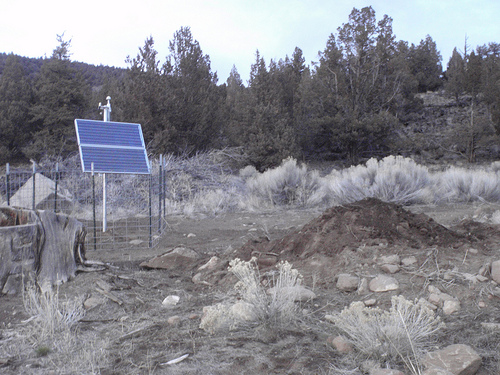M04C
Macdoel, CA, USA
The USArray component of the NSF-funded EarthScope project ended its observational period in September 2021 and all remaining close-out tasks concluded in March 2022. Hundreds of seismic stations were transferred to other operators and continue to collect scientific observations. This USArray.org website is now in an archival state and will no longer be updated. To learn more about this project and the science it continues to enable, please view publications here: http://usarray.org/researchers/pubs and citations of the Transportable Array network DOI 10.7914/SN/TA.
To further advance geophysics support for the geophysics community, UNAVCO and IRIS are merging. The merged organization will be called EarthScope Consortium. As our science becomes more convergent, there is benefit to examining how we can support research and education as a single organization to conduct and advance cutting-edge geophysics. See our Joining Forces website for more information. The site earthscope.org will soon host the new EarthScope Consortium website.




Note: This information is for historical purposes only. With the exception of 19 EarthScope Reference Network stations that are still operating, Lower 48 TA stations have either been removed or adopted by local/state/regional operators or the USGS.
I. Standard Vault Equipment |
|
II. Communications & Power |
||||
|
|
STS-2 |
CMG-3T |
T240 |
|
||
| Sensor | $18,500 | $12,000 | $18,000 |
Cell
|
$1,000 | |
| Vault Equipment | $16,800 | $16,800 | $16,800 |
Radio to Terminal
|
$2,750 | |
| QEP & Environmental Channels | $3,850 | $3,850 | $3,850 |
Radio to AC VSAT
|
$4,000 | |
| Demobilization Credit | ($2,075) | ($2,075) | ($2,075) |
Radio to Solar VSAT
|
$12,250 | |
|
Radio to Internet
|
$2,750 | |||||
| TOTAL | $37,075 | $30,575 | $36,575 | |||
| NOTE: A standard TA installation now includes a QEP and Environmental Channels. Excluding the purchase of the sensor, vault equipment, QEP, Environmental Channels, and communications and power systems specified above, the average cost for permitting, excavation, construction, and installation of a Transportable Array station is $21,000. A 6-channel DAS system costs an additional $1,100. Standard power for the vault is one solar panel and one battery. Each additional battery costs $200 and each solar panel costs $450. | ||||||
Not all organizations have the necessary operations and maintenance support infrastructure to keep their newly acquired TA stations running. Organizations that adopt TA stations have the option to sign on for a subscription-based program (EARN Services) that provides the technical services to ensure that former Transportable Array stations continue operating and contributing data to the IRIS Data Management Center. Subscription rates are based on the communications technology present at the stations and average about $5,000 per year. See the Education and Research Network Support Services brochure for more information.
|
Conditions:
|